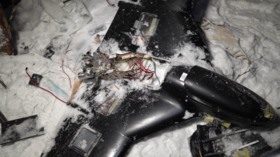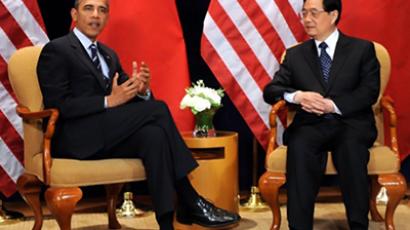Legendary cruiser’s flag back on home soil

The missile cruiser Varyag has brought the jack of its legendary namesake home to Russia. The Varyag was sunk by its own crew in 1904 during the Russo-Japanese war following a fierce battle against an overwhelming force.
The jack (a military naval flag flown on a vessel’s bow), has been lent by a South Korean museum as part of the celebration of the 20th anniversary of diplomatic relations between Moscow and Seoul next year. The relic was handed over to Russian President Dmitry Medvedev on November 11 during the G20 summit From the Pacific port Vladivostok, the jack will be delivered to St. Petersburg’s Navy Museum, where it will be displayed for two years. Earlier, the flag, along with several other objects from the Varyag and the gunboat Koreets, which also took part in the historic battle, were part of a traveling exhibition of the city of Incheon’s Metropolitan Museum, which visited a number of Russian cities over nine months.The Varyag and the Koreets were two Russian navy ships stationed in Korea’s Chemulpo Bay (now part of Incheon) in February 1904, when a vastly superior Japanese fleet arrived to capture this strategic port. Russian commander Captain Rudnev declined to surrender and decided to try to fight his way out of the port and head to the Russian naval base in Port Arthur. In the ensuing two-hour battle, the two Russian ships failed to break free and suffered much damage and many casualties. Then, Rudnev decided to destroy his two commands rather than let Japanese capture them. After crewmembers were transported to neutral vessels, the Koreets was blown up and Varyag sunk.The desperate stand-off impressed all witnesses, including the Japanese, who later cited it as an example of Samurai conduct. There is a popular song describing the battle and the sinking of the Varyag.













